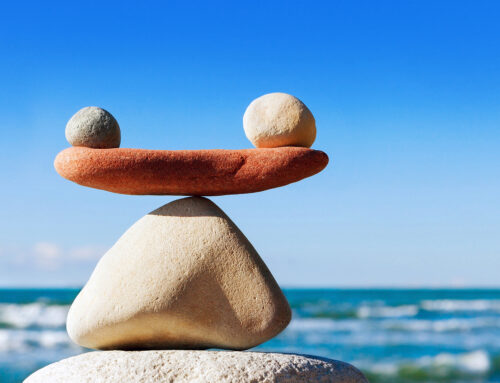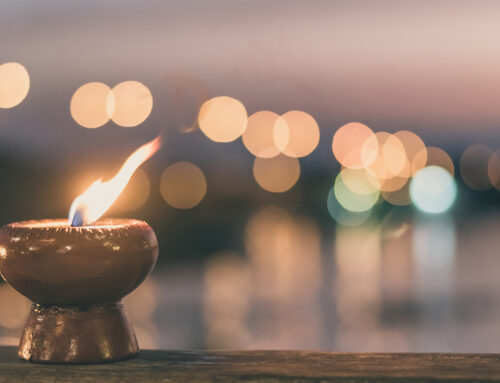
In my previous blog, we explored some of the unexpectedly positive effects brought by the COVID-19 pandemic. While the time of crisis indeed brought much destruction and suffering, it also created opportunities for us to re-examine our lives and develop new perspectives and greater self-understanding.
Many of my recent client sessions have explored how to best hang onto these gains; how to hold onto what we liked about our pandemic lives while we reintegrate into more in-person interactions again. It seems that many people are moving on from the COVID-19 pandemic albeit to varying degrees. Even though the virus still lingers, most people are shifting away from the old ways of responding to it.
Some people seem like they just want to pretend that nothing happened, and push the last three years down into the deepest archives of their long term memory storage and maybe, just maybe, try to “lose” the key on their way back up. However, others acknowledge that there really is no going back to the way things were.
Building Our New Normal
There is no denying that we have been through a collective crisis – one that has deeply impacted all of us, including ways we haven’t even begun to understand. And yet things are continuing to shift. Mask mandates are being lifted, employees are being asked to return to the office, people are returning to in-person gatherings again, and it seems like the world is moving on. But what do we do with all we have just been through? Do we just file it away in the past and try to avoid thinking about it? Or can we find ways to continue the growth we gained and integrate our learnings into some kind of new normal?
Once again, we find ourselves pivoting to accommodate yet another “unprecedented” time of change. It seems like the world has required us to navigate a lot of these lately. More than our fair share, for sure. But it’s still important, vital even, to step with care here. Times of crisis and transition can offer us powerful opportunities to make deep and sustainable changes in our larger life trajectory.
We still have the benefit of not yet being totally locked into our new mental and behavior habits that ultimately become the infrastructure of our lives. We still have the advantage of unstuck perspective, so let’s proceed with care to ensure we make the most of this opportunity while it is here and turn the tides in our benefit – for now and all our future “then’s.”
Proceed With Awareness, One Day At A Time
Too much has changed in the world over the past few years for us to simply just go back to the way things were. The zeitgeist of early 2020 was laced with collective trauma that felt like it had no end in sight. As with any trauma, we are left with a sense of a sense of “before” and “after.” And what happens in the wake of the trauma makes a world of difference in how the experience integrates and impacts us for the rest of our lives. Thus it makes sense to take our next steps with caution and wisdom. But if we aren’t just simply going back to the old “normal,” how do we proceed?
We proceed with as much awareness as possible, one day at a time.
We can give our future selves the gift of slowing down and really making conscious choices as much as possible right now. By slowing down and noticing our habits as they are being formed, we can make increasingly intentional choices with how we spend our energy and attention. As we navigate the many questions that come up, we can practice realigning our internal compasses to accommodate what we learned and truly want to bring forward – now and in the future.
Calibrating Your Internal Compass
By taking the time to intentionally calibrate your internal compass now, you are creating a tool to help you identify and chart a new “normal” for yourself with every moment. You carve a new riverbed for the river of your life. As you practice new things, you develop new habits to support you. And like a riverbed, you can count on these new habits to direct your energy forward in the direction of your core values and deeper sense of purpose.
And I’m not just talking about opportunities for change on an individual level. I’m also talking about fostering all the good work that has been done in the name of peaceful yet meaningful revolution over the past few years. Some really important conversations have arrived on the table that many of us don’t want to abandon. Positive social change is a long game and it doesn’t make sense to drop the valuable momentum we have gained in important social justice and climate issues. We need all the positive momentum we can get.
After my last blog, I invited you to make a list of what you learned about yourself during the pandemic and want to nurture moving forward. What is most important for you to include in your life as you develop new habits and routines? Once you identify what you want to include, then you can set up routines and habits in your daily life that make it easier to make the kinds of choices you want to be making and make it harder to choose the alternative.
Recognizing Cognitive Dissonance
While a plan might sound manageable on paper and in theory, making it actually happen can be a different story. This particular moment in time has its own flavor of “hard.” Even if you have the mindset of embracing new changes, the people you are reconnecting with might be in a very different place. This difference can feel really uncomfortable. In truth, it is a form of cognitive dissonance.
“Cognitive dissonance” is a term we use to describe the experience of discomfort that occurs when the mind tries to hold two potentially conflicting viewpoints at one time. In the face of cognitive dissonance, humans generally try to resolve it by unconsciously and automatically discounting one point of view while strengthening another. This leads to cognitive biases, which are kind of like wearing colored glasses. After a while, you don’t even realize you are wearing them but they are impacting your interpretation of the world around you in pretty fundamental ways.
Here is an example of how cognitive dissonance might play out. Let’s say “Andy” is a guy who thinks UFO’s aren’t real and believes that anybody who believes in them is “off their rocker.” Let’s also say one night Andy sees an unexplainable light in the sky. Andy doesn’t think he is off his rocker, but Andy also saw a light in the sky that he can’t explain. What’s a guy to do? He experiences cognitive dissonance.
To resolve the cognitive dissonance, Andy will most likely either convince himself he didn’t see anything and do his best to forget about it or he will abandon his earlier belief and go all in on UFO’s, doing what he can to convince people that UFO’s are real. Neither response is fully conscious or particularly wise.
Robert Thurman was once quoted to say “Wisdom is the tolerance of cognitive dissonance.” I love this quote. If you think about it, wisdom and learning really requires the tolerance of cognitive dissonance long enough to get curious about our own biases and perspectives. The way of wisdom involves tolerating the cognitive dissonance so one can see the whole picture. It’s uncomfortable, but so is growth.
Choosing Where To Point Your Ship
This process of intentional change can be exhausting if we aren’t taking care of ourselves and setting up our environment to support us along the way. It’s very important to take care of yourself and prioritize your self care as much as possible. You may want to avoid jumping into too many social engagements at once, for example. These gatherings can be unexpectedly exhausting after a long absence, so remember to take it slow and check in with yourself.
Here are few steps you can take to intentionally integrate into your new normal.
- Clarify: If you haven’t already, take the time to consider what kind of changes you want to bring forward and write them down. Try not to get lost in the specifics for now. Just focus on the big picture – what direction do you want to point your ship?
- Set Your Course: Now summarize these larger intentions for yourself in some way. You can write a personal mission statement for the next quarter. You could make a bulleted list of your most important intentions. Use whatever language and form work best for you. You might want to make a thumbnail reminder of your intentions and populate your environment with them as reminders. Hang them up in your home, put the images on your lockscreen – whatever will help you pause and recalibrate and weave your intentions into your everyday.
- What’s Worked Before: Next take a look at your list and try to recall any specific practices or routines you put into place at some point in the last few years that seemed to help. Don’t worry right now about whether or not you managed to make them a habit for very long. For now, just write down anything you did that seemed to be helpful and supportive of those larger intentions that you would like to see in your life moving forward.
- Create Your Riverbed: Finally, brainstorm some ways to build your new routines around the habits that already seem to be working for you. Try to creative new ways to integrate your routines into your new normal. For example, if you discovered how important a regular exercise routine is for you when you were working from home, but you aren’t sure how to fit working out in with your commute – perhaps you can work out closer to work to miss the rush hour commute, for example. Or perhaps you work out more on the weekends instead of weekdays.
Please feel free to share in the comments any techniques that have helped you with post-pandemic reintegration while maintaining any positives you gained along the way.





